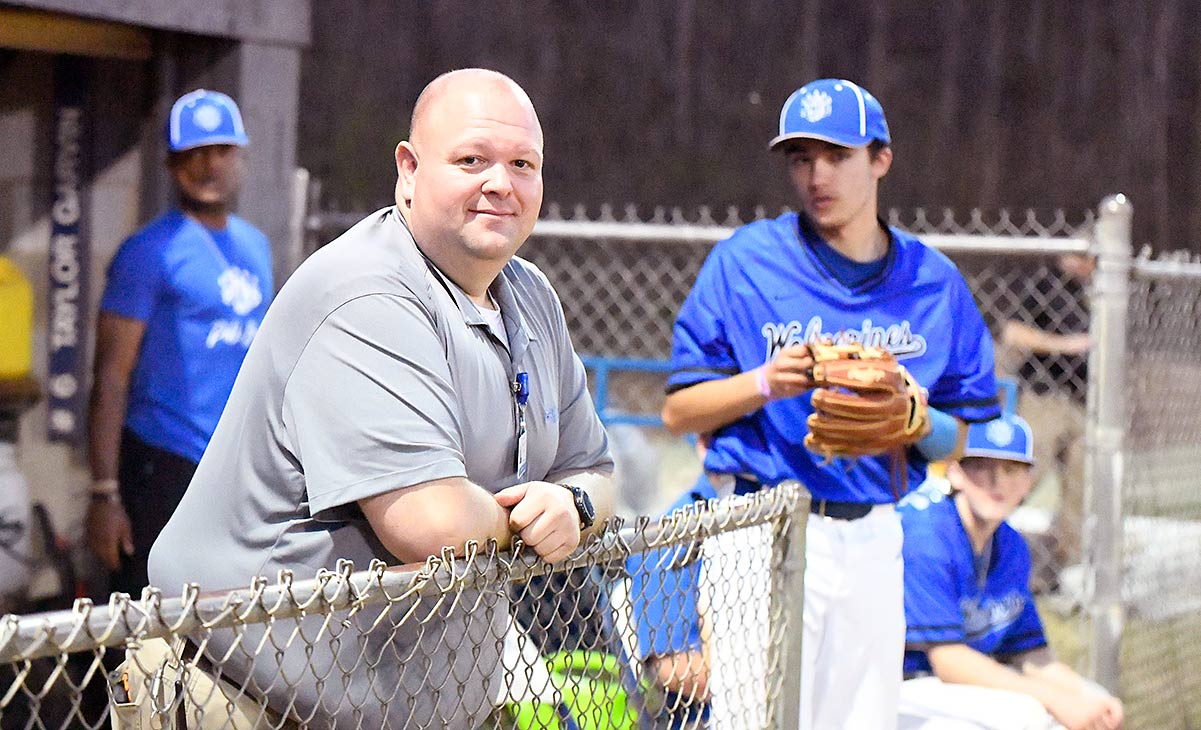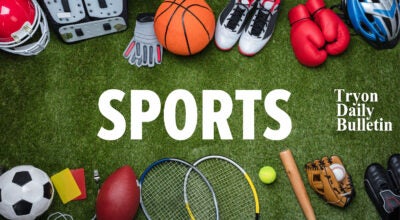Nussbaum helping build St. Luke’s athletic training program
Published 11:43 am Tuesday, April 4, 2023

- Athletic trainer Jason Nussbaum is part of the St. Luke's Hospital team now providing services to Polk County High School
|
Getting your Trinity Audio player ready...
|
A bad-hop grounder had barely touched the ground after ricocheting off the head of a Polk County infielder before Jason Nussbaum raced onto the field.
The Polk County athletic trainer quickly reached the player, running quick checks and tests to make certain the player stood fit to continue. Examination complete, Nussbaum returned to the Polk County dugout, conferring with head coach Billy Alm along the way, and resumed keeping a watchful eye on the game.
On-field care is the most visible aspect of the duties of Nussbaum, who is stationed at PCHS as part of St. Luke’s Hospital’s new athletic training initiative. St. Luke’s kicked off that program in January, forming a partnership with Polk County Schools that includes Nussbaum’s direct work with Wolverine athletes and Jason Currin serving as manager of the program, which is based in St. Luke’s Orthopedic & Sports Medicine offices.
Nussbaum, who brings an extensive background as an athletic trainer at the high school and college levels to his new role, is more than enjoying helping to get St. Luke’s new program up and running.
“It has been tremendous,” Nussbaum said. “The support from (St. Luke’s CEO) Michelle Fortune, from Lynn Hensley (vice-president of ambulatory services until her recent retirement), from just the top down all the way and the vision they have in wanting to invest in kids in this community. Wanting to support the school system and buy into the next generation of not only orthopedic care, but family care.
“We’re just so fortunate to have leadership and vision that is truly not only wanting to put us in place, but they have given us the rights to do this the way that it is supposed to be done. They’ve said, you as athletic trainers know your craft. They’ve hired Jason Currin. We’ve known each other for years. The two of us, I think, have been put together intentionally with that purpose of building the program in unity.
“The support from the top has been, don’t come here and fit our mold. The support has been, you guys know your profession, we are going to do this the right way. So let’s collaborate. Let’s look at this. And set this up from the start so this is successful in a way that does things to support kids and gives the best outcome for these students, and that’s been absolutely tremendous.”
In-game management is the work that Polk County fans and families see most, but it’s only part of Nussbaum’s duties. He and Currin also work with athletes on injury rehabilitation and preventive care, making certain each day that athletes are fit for practices and competitions.
That also often includes making a determination as to whether an athlete is ready to return to participation from an injury, often one of the toughest aspects of an athletic trainer’s duties.
“There’s never a situation that will supersede a decision that’s more important than a child and their family and their health and well-being for the long term,” Nussbaum said.
Athletic trainers stepped into the national spotlight earlier this year during the Monday Night Football incident involving Buffalo Bills safety Damar Hamlin, who took a blow to the chest and soon collapsed on the field. Hamlin suffered cardiac arrest and his heart stopped, but athletic trainers and paramedics were able to restart Hamlin’s heart and were credited with saving his life.
“People should know that the guys that handled that situation went through the exact same training and education that we do,” Nussbaum said. “Obviously, the NFL has an unlimited budget to have equipment, but the equipment that saved Damar Hamlin’s life is equipment that is here at Polk County High School.
“The skills and the education and the knowledge is consistent from one athletic trainer to the next. And whether it’s a cardiac arrest or a heat stroke or a concussion or a neck fracture, whatever the situation is, we are allied healthcare professionals that work in conjunction with licensed physicians just like a nurse that follows standing orders and protocols. We can handle a large and wide range of situations, but when the injury crosses a certain level, we refer it to orthopedics, to establish that next level of care. And then it gets kicked back to us to handle the rehabilitation aspect of things, depending on what the situation is.”
Nussbaum’s interest in athletic training began in high school when he attended a summer camp at the University of Kentucky. Nussbaum’s small school in Ohio had no trainer, so he soon began to fill that role. He graduated from Erskine College, received his master’s in sport management from California University of Pennsylvania and has earned a wide range of certifications, some of those while serving as a volunteer first responder and firefighter.
Currin also owns extensive experience. He spent more than a decade as head athletic trainer at Woodruff High School, earning recognition as the South Carolina Athletic Coaches’ Association Athletic Trainer of the Year in 2020. He also holds bachelor’s and master’s degrees and numerous certifications from organizations such as the American Heart Association and the National Federation of High Schools.
Both Currin and Nussbaum have taught sports medicine and related classes in addition to their work as athletic trainers.
“I love the connection and the relationship building,” Nussbaum said of his role. “I haven’t been able to come up with another health care profession (where) you get to build a day-in, day-out relationship with your patient while they’re healthy, and then you get to, most of the time, see the injury happen. An EMT doesn’t get to see the accident happened most of the time. I respond to it on the field,
“We’re responding to the emergency aspect or the initial care aspect. We’re involved in the treatment, from start to finish. We do the rehabilitation portion, whether they’re surgery-involved or it’s minor, either way. And then the thrilling moment, the capstone moment, is seeing the first successful moment when that athlete gets back to their sport. They hit that home run, they nailed that three-pointer, they put it in the upper 90s for the first time, they throw that touchdown pass.
“Whatever it is for them, usually they come off the field and the first person they celebrate with is you because you’ve walked that journey with them from the time before they were injured. Nobody goes to their doctor and hangs out and gets to know them. You’re part of the community, you’re part of the school, you feel part of the team. And then when something goes wrong, you have that trust, you have that closeness. You build a bond with people, and I think that’s what’s most unique about it.”





